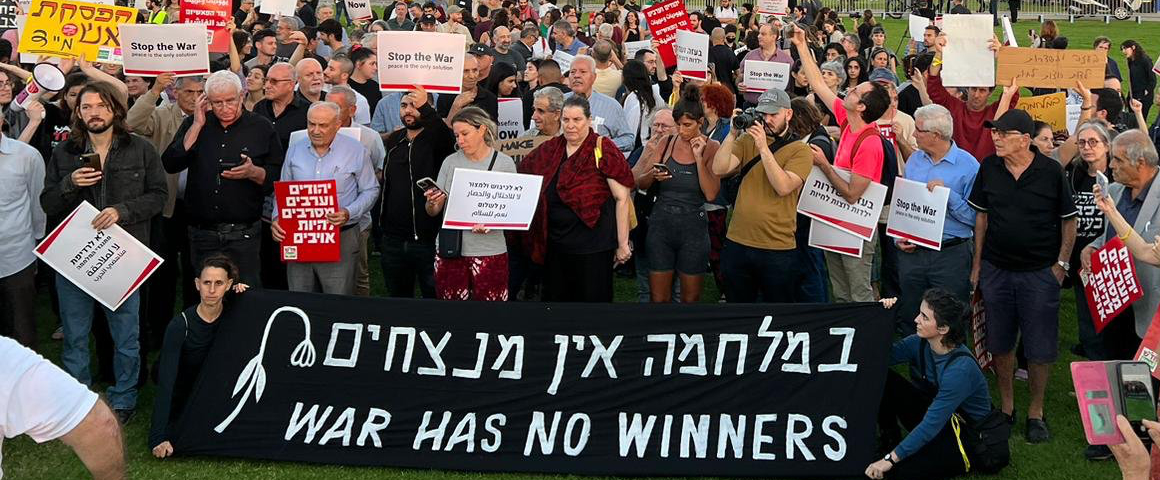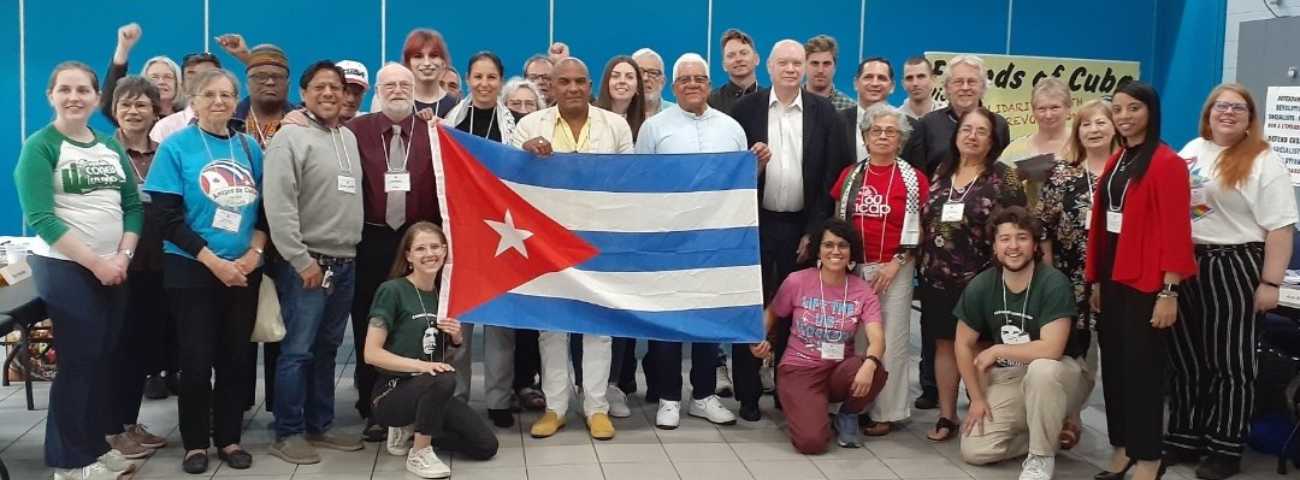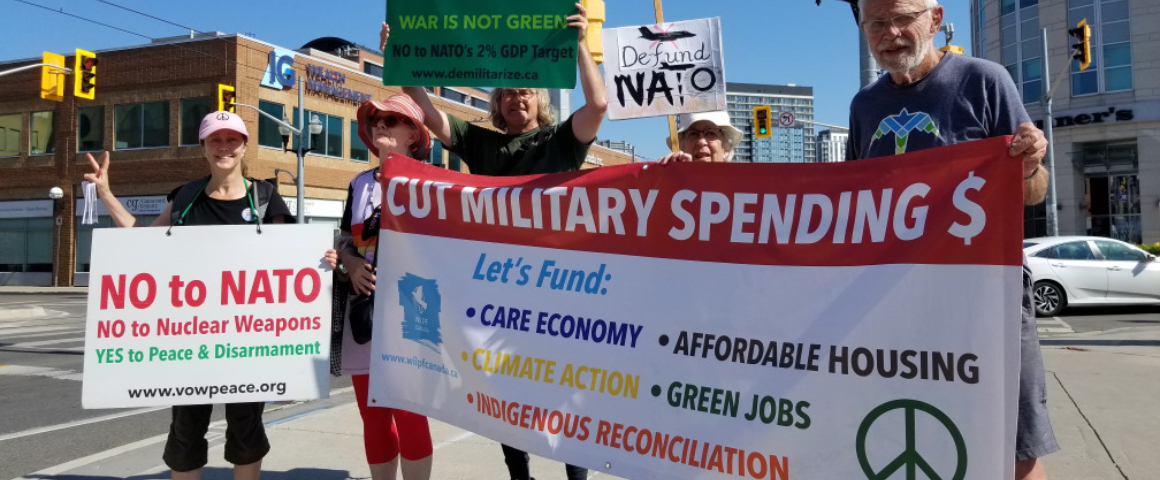By C.J. Atkins
The peace movement in Israel is on the offensive. From Tel Aviv to Jerusalem, the demands in the streets are clear: Release all hostages on both sides and immediately remove Prime Minister Benjamin Netanyahu from office.
Pro-peace forces have been making the most of both the four-day “truce” and their recent Supreme Court victory over a police ban on demonstrations, to tell their fellow citizens and the whole world that the extremists in Netanyahu’s war cabinet do not have the unanimous support of the people.
With the “pause in hostilities” ticking into its final hours, the anti-war movement – led by the Democratic Front for Peace and Equality coalition (Hadash) – fought against the clock to pressure the government to extend the pause and agree to a permanent ceasefire.
Netanyahu and his cabinet accepted a 48-hour extension on November 27 but continued to declare their determination to resume the destruction of Gaza and its people within days.
“All-for-all” hostage deal
Peace protesters are advocating what they call an “all-for-all” hostage deal in which all Israeli hostages are brought back in exchange for all Palestinian prisoners held in Israel.
Ayman Odeh – a member of Israel’s parliament, the Knesset, and chair of the Hadash coalition – welcomed the first waves of hostages released and said the process should continue until all the Israelis and Palestinians in captivity are freed.
“I bless and am happy for the return of mothers and children to their families,” he said. “We must not give up the vision for a real political agreement that will bring peace between the two peoples.”
Odeh emphasized that “it is the right of both peoples, the Israeli and the Palestinian, to live a life of security and joy in the bosom of their family,” and declared that pro-peace and progressive forces in Israel “will not give up until a political agreement is reached.”
Such a political solution, Hadash has said, must include an end to Israeli occupation, the freeing of all political prisoners, an end to terror and the establishment of a Palestinian state.
As of this writing, approximately 184 captives taken from Israel in the October 7 attacks are still held by Hamas. Estimates vary, but at least 8,000 Palestinians are believed to be held by Israel; more than 2,200 of them are imprisoned without charge or trial and hundreds are women and children.
Videos of returning Israeli and foreign national hostages held by Hamas have been broadcast around the globe over the last two days, but fewer images have been seen of freed Palestinians returning to their families. That’s because the Israeli government is determined to ensure media coverage focuses only on the individuals released from Hamas captivity, part of a strategy to generate support for the government’s war against Gaza.
Freed Israeli captives are whisked to meetings with state officials in front of television cameras; their families are put on stage at mass rallies to show their appreciation to the Netanyahu government. Whenever any family members or released hostages depart from that line, they are shuffled off to the sidelines.
As for the released Palestinians, they are trucked from jails inside Israel to the Ofer military prison in the West Bank that’s run by the Israeli Defense Forces and then quietly handed over to the International Red Cross. Celebrations or community “welcome home” events for them have been banned by Israel.
Despite the government’s attempt to prevent the press from seeing who it has been holding captive – including children as young as 14 – the hostage exchange process has brought fresh scrutiny to Israel’s system of mass Palestinian detention.
Nineteen prisons within Israel’s borders and one in the occupied West Bank hold Palestinians. Before the Hamas attacks, there were already 5,200 Palestinians held in these facilities. Since then, arrests have skyrocketed, with 3,000 more people swept up and locked away.
Statistics compiled by international agencies estimate that 40 percent of Palestinian men spend at least some time in an Israeli prison during their life. But women and children are not spared either, as the prisoner release lists have proved. As many as 250 children under 18 are captives of Israel, according to the Palestinian Prisoners Society.
“The main alleged crime for these detentions is stone-throwing, which can carry a 20-year sentence in prison for Palestinian children,” said a report published in July by the children’s rights organization, Save the Children.
Even with the Palestinians released so far, the pace of new arrests by Israel in the West Bank over the past few days could mean that there has been a net increase in the number of Palestinians held prisoner since the hostage swaps began.
“Netanyahu out!”
Hadash says negotiation of a lasting peace will require someone other than Netanyahu and his far-right allies to do the bargaining on the Israeli side. That’s why his removal is the second immediate demand of the ceasefire movement.
“The deals must continue until all the abductees, captives, and prisoners are released,” the coalition, which is led by the Communist Party of Israel, said in a statement. “But the end of the war must also be accompanied by the overthrow of the fascist government and the beginning of a real political process with the Palestinian leadership under the auspices of the international community.”
On Saturday evening in Jerusalem, thousands of demonstrators converged on Netanyahu’s residence, marching under a banner reading, “Impeachment Now.” Police erected barriers to block protesters from reaching the prime minister’s house, but a rally went on anyway.
“The blood is on Netanyahu’s hands,” said Ofer Baraam, a speaker whose son was killed by Hamas militants on October 7. Among the crowd, signs in both Hebrew and Arabic called for a political solution and the removal of the country’s current leadership.
As the expiration of the truce fast approaches and the peace movement fights desperately to extend it, the leaders of the Israeli Defense Forces are making no effort to hide their eagerness to resume the killing.
General Herzi Halevi addressed his soldiers on Sunday, assuring them that combat would soon resume. He told them their “fighting spirit and determination” would “achieve all the objectives of the war.”
Netanyahu also pledged there is more death to come: “I want to be clear. The war is continuing. Nothing will stop us.”
The next focus will reportedly be the supposedly “safe” southern section of Gaza, where Palestinians have already been herded for the past several weeks. The IDF plans to send its troops and tanks toward the southern city of Khan Younis once it resumes the ground campaign.
Northern Gaza is already a wasteland, with over half of all buildings destroyed. 1.7 million of Gaza’s 2.3 million people have been expelled from their homes, and so-called “humanitarian corridors” have served as little else but pathways for permanent removal.
As for Palestinians who have tried to return to their homes in the north to either salvage some belongings or search for the bodies of their dead in the rubble, there has been no ceasefire for them. Several have been killed by IDF soldiers.
The army declared, “There is no intention to allow a return from the south to the north of the Gaza Strip.” It told Palestinians “not to approach within even a kilometre of the border.”
People’s World
Support socialist media!
If you found this article useful, please consider donating to People’s Voice or purchasing a subscription so that you get every issue of Canada’s leading socialist publication delivered to your door or inbox!
For over 100 years, we have been 100% reader-supported, with no corporate or government funding.




